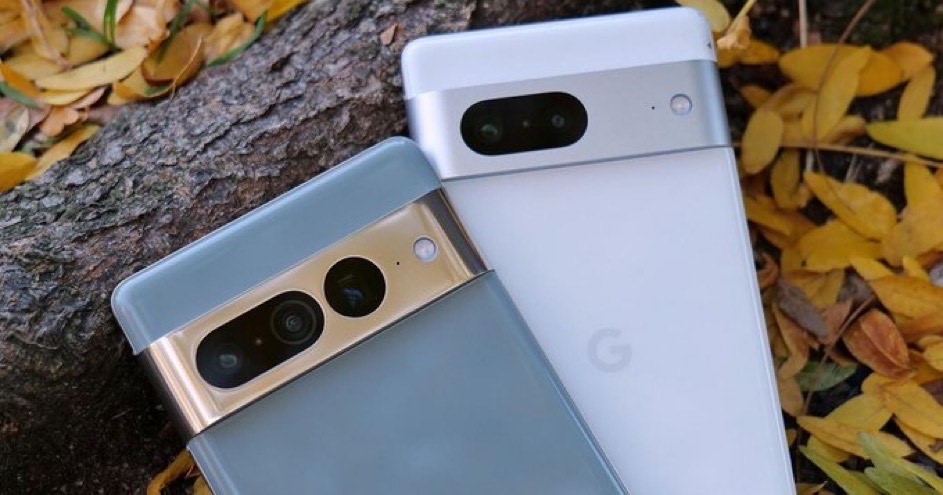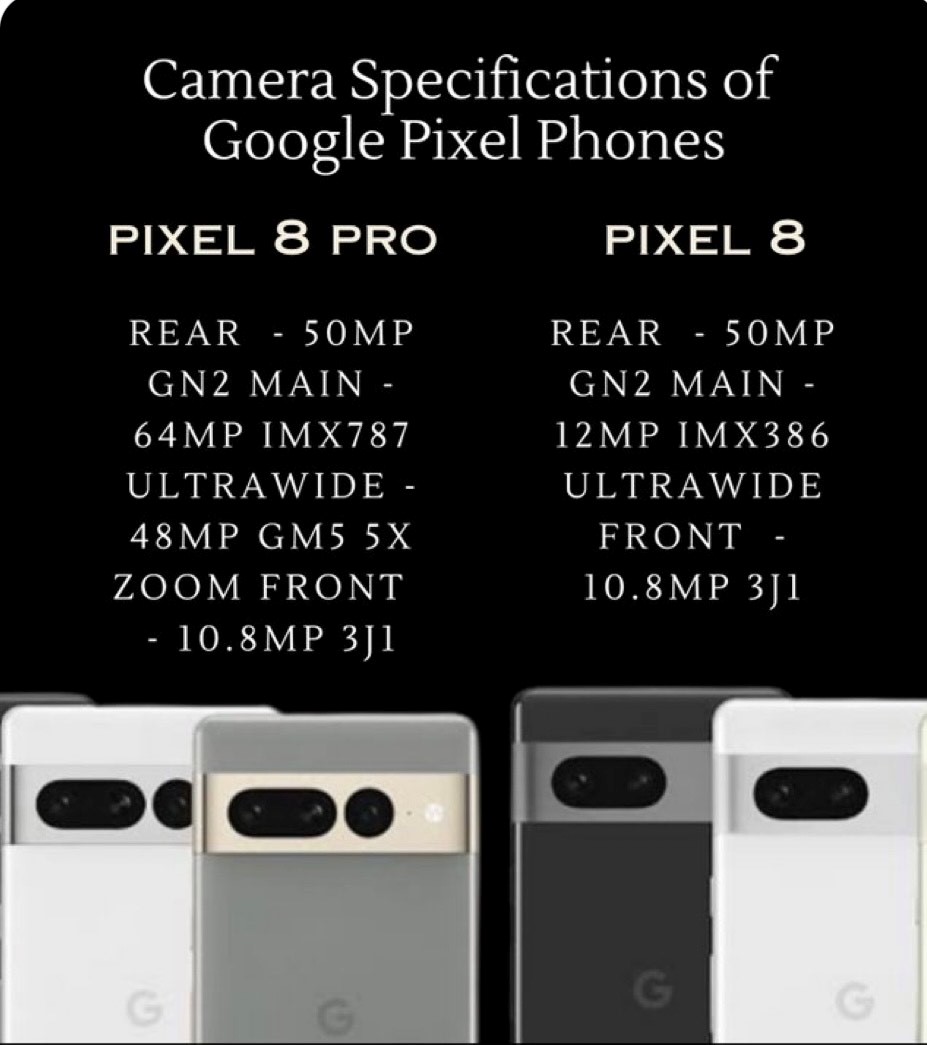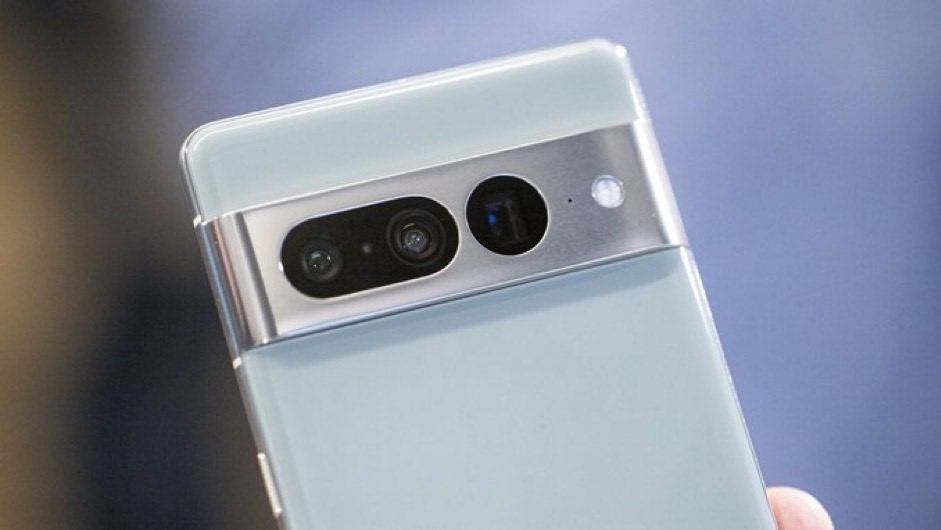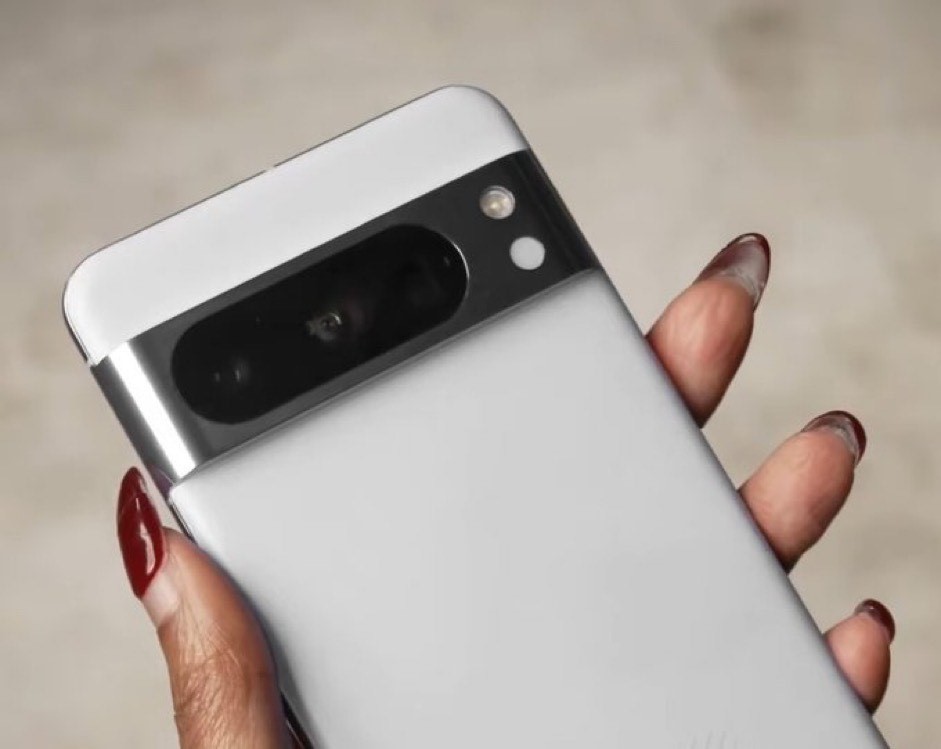HIGHLIGHTS
1. Google might launch the Pixel 8 series with a new Samsung sensor.
2. The Pixel 8 Pro will get a new ultra-wide camera sensor and a thermometer on the back.
3. There will likely be some new AI-powered camera features introduced as well.
4. Google’s Pixel smartphones stand out for their cameras and some major upgrades are expected in the Pixel 8 series.
5. This time, Google is reportedly upgrading the camera hardware and adding a bunch of new features as well.
6. Here’s the latest on the Google Pixel 8 series’ camera upgrades.
Google is expected to launch the Pixel 8 series later this year.
The company is likely to unveil two flagship smartphones later this year.
If previous launch timelines are to go by. The Pixel 8 series will launch in October.
Google is yet to confirm any details about the Pixel 8 series.
Meanwhile, like every year, details about the Pixel 8 series have started surfacing online ahead of the launch. A new leak has now revealed the camera details of the Pixel 8 series. Based on the leaked details, it looks like the Pixel 8 and Pixel 8 Pro will get a new primary camera sensor.
The Pixel 8 Pro will continue to feature a triple-camera setup.

Let’s take a look at the Google Pixel 8, Pixel 8 Pro camera specifications and features leaked ahead of the launch.
Google Pixel 8 Pro is also receiving a much-needed upgrade to the ultrawide camera. The dated 12MP Sony IMX386 is replaced by a much more usable 64MP Sony IMX787 — the same sensor as the primary camera found on the Pixel 7a.
This is a huge upgrade; the sensor is almost twice the size and should vastly improve the quality of the ultrawide camera. Google has also made the lens slightly wider.
While we don’t know the exact field-of-view (FoV), it’s been bumped from a 0.56x zoom ratio to 0.49x.
There’s a chance the macro mode introduced with the Pixel 7 series might be missing this year — as of now, the feature is disabled on the Pixel 8 Pro.
The feature may be re-enabled later, or perhaps Google killed it off.
The vanilla Google Pixel 8’s ultrawide camera is also upgraded, although more modestly.
While the camera sensor is the same Sony IMX386 found in the Pixel 6 series, Google has made it slightly wider this year. Pixel 7 had a 0.67x zoom ratio, which is now 0.55x in the Pixel 8.
Google Pixel 8 and Pixel 8 Pro Camera Specs: Hardware Upgrade

The main upgrade in the camera hardware this year is coming to both of the Pixel 8 models — the Samsung ISOCELL GN1 sensor makes way for the ISOCELL GN2.
This brings a few improvements: first, the sensor is larger and should capture about 35% more light than its predecessor for brighter low-light images and faster shutter speeds to reduce blur.
The sensor also supports 8K/30fps video capture, as does the Tensor G3 processor.
This might not make its way to users; it’s currently not supported by GCam running on the Pixel 8 and existing Pixels run notoriously hot at 4K/60fps already. The last enhancement is the previously leaked support for Staggered HDR.
This reduces the delay between the frames that are captured for HDR to reduce ghosting and speed up the capture process. The technology might push Google’s HDR+ capabilities even further, providing faster, more reliable shots.
Google Pixel 8 Pro is also receiving a much-needed upgrade to the ultrawide camera. The dated 12MP Sony IMX386 is replaced by a much more usable 64MP Sony IMX787 — the same sensor as the primary camera found on the Pixel 7a.
This is a huge upgrade; the sensor is almost twice the size and should vastly improve the quality of the ultrawide camera. Google has also made the lens slightly wider.
While I don’t know the exact field-of-view (FoV), it’s been bumped from a 0.56x zoom ratio to 0.49x.

Surprisingly, there’s a chance the macro mode introduced with the Pixel 7 series might be missing this year — as of now, the feature is disabled on the Pixel 8 Pro.
The feature may be re-enabled later, or perhaps Google killed it off.
The vanilla Google Pixel 8’s ultrawide camera is also upgraded, although more modestly.
While the camera sensor is the same Sony IMX386 found in the Pixel 6 series, Google has made it slightly wider this year. Pixel 7 had a 0.67x zoom ratio, which is now 0.55x in the Pixel 8.
The telephoto camera on Pixel 8 Pro appears to remain the same 5x module as the Pixel 7 Pro. The same goes for the 11MP selfie camera from the Pixel 7 series. Here’s the full rundown:
Google further divide the regular Pixels from its Pro equivalents.
While previous Pixels in each generation had key differences (e.g. the inclusion of telephoto cameras on the Pro models), it never felt like the regular devices were a major downgrade — they simply had fewer features.
With this generation, this is changing. Buying the regular Pixel 8 over the Pixel 8 Pro will now mean weaker zoom and a lower-end ultrawide experience.
Improved time-of-flight is coming to the Pixel 8

It isn’t a very well-known fact, but all Pixel phones since the Pixel 6 (excluding the Pixel A series) have had a single-point time-of-flight (ToF) sensor to aid the autofocus — the STMicroelectronics VL53L1.
The Pixel 8 Pro finally gets something more useful. The device has a new 8×8 ToF VL53L8 sensor. While having a real LiDAR camera sensor, like the 0.3MP IMX590 in the iPhone 14 Pro, is obviously far more versatile, the new sensor in the Pixel 8 Pro is still a massive upgrade, and it should, at the very least, make the autofocus much more reliable.
The ToF sensor upgrade isn’t coming to the regular Pixel 8; it retains the old VL53L1.
The Pixel 8 thermometer is only a thermometer

Another Pixel 8 Pro feature that has already leaked is an FIR thermometer sensor.
Some have speculated that it might be a full thermal camera that could be used for photography purposes too, so let me clear the air: it’s not.
The sensor is a Melexis MLX90632, primarily recommended for high-precision non-contact temperature measurements, including body temperature.
It’s not a camera or anything else that could serve any purpose other than measuring temperature.
Google simply decided to include a fairly expensive gimmick in its device, and not for the first time (hello, Motion Sense).
Pixel 8 camera software: Improved features are coming

While the camera software on Pixel 8 is obviously in fairly early stages of development and mainly focuses on making the new hardware work, we have spotted some new low-level feature enhancements.
“Adaptive torch” is a new feature that dynamically adjusts the flash intensity based on the scene and other inputs (e.g. which capture mode is used). This should prevent overexposed shots and make low-light photography even better if you use the flash.
Another new feature is “Segmentation AWB.” As the name suggests, the scene will be segmented into different parts using AI to then selectively apply different processing to particular parts of the image. This concept isn’t new, Qualcomm announced a similar feature for the Snapdragon 8 Gen 2. It will be interesting to see how Google incorporates this into its existing processing pipelines.
Google might also add a video bokeh blur level selection for the phone’s cinematic mode, which was first introduced on the Google Pixel 7 series.
GOOGLE PIXEL 8 KEY SPECIFICATIONS
Key Specs
| RAM | 8 GB |
| Processor | Google Tensor G2 |
| Rear Camera | 64 MP + 48 MP + 12 MP |
| Front Camera | 16 MP |
| Battery | 5000 mAh |
| Display | 5.8 inches (14.73 cm) |
General
| Launch Date | May 10, 2023 (Unofficial) |
| Operating System | Android v12 |
Performance
| Chipset | Google Tensor G2 |
| CPU | Octa core (2.85 GHz, Dual core, Cortex X1 + 2.35 GHz, Dual core, Cortex A78 + 1.8 GHz, Quad core, Cortex A55) |
| Architecture | 64 bit |
| Fabrication | 4 nm |
| Graphics | Mali-G710 MC10 |
| RAM | 8 GB |
Display
| Display Type | Super AMOLED |
| Screen Size | 5.8 inches (14.73 cm) |
| Resolution | 1080 x 2268 pixels |
| Pixel Density | 433 ppi |
| Screen to Body Ratio (calculated) | 79.46 % |
| Bezel-less display | Yes with punch-hole display |
| Touch Screen | Yes, Capacitive Touchscreen, Multi-touch |
Design
| Height | 150.5 mm Compare Size |
| Width | 70.8 mm |
| Thickness | 8.9 mm |
Camera
| MAIN CAMERA | ||
| Camera Setup | Triple | |
| Resolution | 64 MP f/1.9, Wide Angle, Primary Camera 48 MP f/3.5, Telephoto Camera 12 MP f/2.2, Ultra-Wide Angle Camera |
|
| Autofocus | Yes | |
| Flash | Yes, LED Flash | |
| Image Resolution | 9000 x 7000 Pixels | |
| Settings | Exposure compensation, ISO control | |
| Shooting Modes | Continuous Shooting High Dynamic Range mode (HDR) |
|
| Camera Features | Digital Zoom Auto Flash Face detection Touch to focus |
|
| Video Recording | 1920×1080 @ 30 fps | |
| FRONT CAMERA | ||
| Camera Setup | Single | |
| Resolution | 16 MP f/2.2, Ultra-Wide Angle, Primary Camera | |
| Video Recording | 1920×1080 @ 30 fps | |
Battery
| Capacity | 5000 mAh |
| Type | Li-Polymer |
| Removable | No |
| Quick Charging | Yes, Fast |
| USB Type-C | Yes |
Storage
| Internal Memory | 128 GB |
| Expandable Memory | No |
Network & Connectivity
| SIM Slot(s) | Dual SIM, GSM+GSM |
| SIM Size | SIM1: Nano, SIM2: eSIM |
| Network Support | 5G Not Supported in India, 4G Supported in India, 3G, 2G |
| VoLTE | Yes |
| SIM 1 |
4G Bands:
TD-LTE 2300(band 40)
FD-LTE 1800(band 3) 3G Bands:
UMTS 1900 / 2100 / 850 / 900 MHz
2G Bands:
GSM 1800 / 1900 / 850 / 900 MHz
GPRS:
Available
EDGE:
Available
|
| SIM 2 |
4G Bands:
TD-LTE 2300(band 40)
FD-LTE 1800(band 3) 3G Bands:
UMTS 1900 / 2100 / 850 / 900 MHz
2G Bands:
GSM 1800 / 1900 / 850 / 900 MHz
GPRS:
Available
EDGE:
Available
|
| Wi-Fi | Yes, Wi-Fi 4 (802.11 b/g/n) |
| Wi-Fi Features | Mobile Hotspot |
| Bluetooth | Yes, v5.2 |
| GPS | Yes with A-GPS, Glonass |
| USB Connectivity | Mass storage device, USB charging |
Multimedia
| Loudspeaker | Yes |
| Audio Jack | USB Type-C |
Sensors
| Fingerprint Sensor | Yes |
| Fingerprint Sensor Position | On-screen |
| Other Sensors | Light sensor, Proximity sensor, Accelerometer, Compass, Gyroscope |
GOOGLE PIXEL 8 PRO KEY SPECIFICATIONS
Key Specs
| RAM | 12 GB |
| Processor | Google Tensor G2 |
| Rear Camera | 64 MP + 48 MP + 12 MP |
| Front Camera | 16 MP |
| Battery | 5100 mAh |
| Display | 6.52 inches (16.56 cm) |
General
| Launch Date | May 10, 2023 (Unofficial) |
| Operating System | Android v12 |
Performance
| Chipset | Google Tensor G2 |
| CPU | Octa core (2.85 GHz, Dual core, Cortex X1 + 2.35 GHz, Dual core, Cortex A78 + 1.8 GHz, Quad core, Cortex A55) |
| Architecture | 64 bit |
| Fabrication | 4 nm |
| Graphics | Mali-G710 MC10 |
| RAM | 12 GB |
Display
| Display Type | Super AMOLED |
| Screen Size | 6.52 inches (16.56 cm) |
| Resolution | 1440 x 3120 pixels |
| Pixel Density | 527 ppi |
| Screen to Body Ratio (calculated) | 83.71 % |
| Bezel-less display | Yes |
| Touch Screen | Yes, Capacitive Touchscreen, Multi-touch |
| Refresh Rate | 144 Hz |
Design
| Height | 162.6 mm Compare Size |
| Width | 76.5 mm |
| Thickness | 8.7 mm |
Camera
| MAIN CAMERA | ||
| Camera Setup | Triple | |
| Resolution | 64 MP f/1.9, Wide Angle, Primary Camera 48 MP f/3.5, Telephoto Camera 12 MP f/2.2, Ultra-Wide Angle Camera |
|
| Autofocus | Yes | |
| Flash | Yes, Dual LED Flash | |
| Image Resolution | 9000 x 7000 Pixels | |
| Settings | Exposure compensation, ISO control | |
| Shooting Modes | Continuous Shooting High Dynamic Range mode (HDR) |
|
| Camera Features | Digital Zoom Auto Flash Face detection Touch to focus |
|
| Video Recording | 1920×1080 @ 30 fps | |
| FRONT CAMERA | ||
| Camera Setup | Single | |
| Resolution | 16 MP f/2.2, Ultra-Wide Angle, Primary Camera | |
| Video Recording | 1920×1080 @ 30 fps | |
Battery
| Capacity | 5100 mAh |
| Type | Li-Polymer |
| Removable | No |
| Quick Charging | Yes, Fast |
| USB Type-C | Yes |
Storage
| Internal Memory | 256 GB |
| Expandable Memory | No |
Network & Connectivity
| SIM Slot(s) | Dual SIM, GSM+GSM |
| SIM Size | SIM1: Nano, SIM2: eSIM |
| Network Support | 5G Not Supported in India, 4G Supported in India, 3G, 2G |
| VoLTE | Yes |
| SIM 1 |
4G Bands:
TD-LTE 2300(band 40)
FD-LTE 1800(band 3) 3G Bands:
UMTS 1900 / 2100 / 850 / 900 MHz
2G Bands:
GSM 1800 / 1900 / 850 / 900 MHz
GPRS:
Available
EDGE:
Available
|
| SIM 2 |
4G Bands:
TD-LTE 2300(band 40)
FD-LTE 1800(band 3) 3G Bands:
UMTS 1900 / 2100 / 850 / 900 MHz
2G Bands:
GSM 1800 / 1900 / 850 / 900 MHz
GPRS:
Available
EDGE:
Available
|
| Wi-Fi | Yes, Wi-Fi 4 (802.11 b/g/n) |
| Wi-Fi Features | Mobile Hotspot |
| Bluetooth | Yes, v5.2 |
| GPS | Yes with A-GPS, Glonass |
| USB Connectivity | Mass storage device, USB charging |
Multimedia
| Loudspeaker | Yes |
| Audio Jack | USB Type-C |
Sensors
| Fingerprint Sensor | Yes |
| Fingerprint Sensor Position | On-screen |
| Other Sensors | Light sensor, Proximity sensor, Accelerometer, Compass, Gyroscope |
Faqs
1) What are Google Pixel 8 Series Camera Specifications (Leaked)?
Ans) The Google Pixel 8 series will likely launch in October. Ahead of the launch, new details about the Pixel 8 series camera have leaked online.
The industry report by claims that the Pixel 8 and Pixel 8 Pro will feature a new primary camera sensor. Currently, the Pixel 7 and Pixel 7 Pro (Review) feature a 50MP Samsung GN1 primary camera sensor.
The upcoming Pixel 8 series is said to feature a 50MP Samsung GN2 camera sensor. The larger sensor should help capture 35 per cent more light than the GN1.
The ultra-wide camera in the Pixel 8 series will also get some changes. Starting with the Pixel 8, the device is said to feature a 12MP Sony IMX386 sensor, which was found in the Pixel 6 series. However, the sensor in the Pixel 8 will capture wider 0.55x shots as opposed to 0.67x ultra-wide shots in the Pixel 7.
The Pixel 8 Pro’s ultra-wide camera will be brand new. According to the report, Google will ditch the 12MP IMX386 ultra-wide camera and launch its upcoming Pro model with a 64MP Sony IMX787. The device will have a 0.49x zoom ratio, which is wider than the Pixel 7 Pro’s 0.56x zoom.
Lastly, the telephoto camera. While the Pixel 8 will not feature one, the Pixel 8 Pro is said to feature a 48MP Samsung GN5 sensor with a telephoto lens that can shoot up to 5x optical zoom. Yes, the telephoto camera sensor is the same as the Pixel 7 Pro.
For selfies, there will be an 11MP Samsung 3J1 front camera sensor, which is the same as the Pixel 7 series.
Additionally, the report stated that the Pixel 8 Pro will get an improved Time-of-Flight sensor, which should ideally result in faster autofocus. Also, there is a new thermometer located next to the camera sensors on the back of the 8 Pro. The sensor is a Melexis MLX90632, primarily recommended for high-precision non-contact temperature measurements, including body temperature. It’s not a camera or anything else that could serve any purpose other than measuring temperature, according to the report.
Coming to the camera-centric software improvements, there will be a new feature called “Segmentation AWB.” The feature will segment a scene into different parts using AI to then selectively apply different processing to particular parts of the image. “Adaptive torch” is a new feature that dynamically adjusts the flash intensity based on the scene and other inputs. Lastly, Google might also add a video bokeh blur level selection for the phone’s cinematic mode, which was first introduced on the Pixel 7 series.
Some other details about the Pixel 8 series have leaked as well.
There will be minor changes to the design of the upcoming Google flagship phones. The Pixel 8 will likely sport a tad smaller 6.2-inch display compared to the Pixel 7’s 6.3-inch display.
2) What are Google Pixel 8 Camera Specifications Expectations?
Ans) The vanilla Pixel 8 will likely have a 50MP Samsung GN 2 primary with A 12MP Sony IMX 386 ultra-wide sensor. On the front, the Pixel 8 will have a 10.8MP Samsung 3J1 selfie shooter.
3) What are Google Pixel 8 Pro Camera Specifications Expectations?
Ans) Like the non-pro, the bigger sibling may have a 50MP GN2 primary camera sensor.
We could witness a giant leap in the ultra-wide camera which may clock to 64MP. It could be an IMX 787 sensor, which primarily sits inside the new Google Pixel 7a.
Like last year’s Pixel 7 Pro, the 8 Pro could have the same 48MP Samsung GM5 sensor with up to 5x zoom capabilities. As tipped by reports, the diagram is visible with an FIR thermometer sensor, a To sensor for improved autofocus and a flash. Lastly, the front camera also remains the same at
10.8MP.
4) How is the Google Pixel 8 Series Camera Software?
Ans) The report adds that the phones may have an “adaptive torch” to adjust the light intensity based on the surroundings and enhance overall night photography.
While the primary camera sensor and the hardware chip – Tensor G3, support 8K video recording at 30fps, the smartphones may still stick to 4K at 60fps footage due to thermal issues.
5) Google Pixel 8 camera leak details new main sensor, Pro-only upgrades, more
Ans) The camera has always been the best feature of Google’s Pixel smartphones, and according to a detailed new leak, the Pixel 8 and Pixel 8 Pro are set to adopt some big new upgrades, including a new main sensor, some Pro-exclusive upgrades, and much more.
Another leak courtesy of Kamila Wojciechowska through Android Authority brings us a detailed breakdown of what might be coming to the Pixel 8 and Pixel 8 Pro in terms of the cameras.
The biggest detail here is a new primary camera sensor for both phones, the Samsung ISOCELL GN2. This 50MP sensor is the direct successor to the GN1 that Pixel 6 and 7 use. The sensor is physically larger and able to capture about 35% more light from a scene. The new sensor also adds more technical support for features such as 8K video recording (Tensor G3 also supports this) and Staggered HDR, which was also leaked to be heading to Pixels.
Pixel 8 Pro would get another exclusive upgrade in its time-of-flight sensor, which will adopt an 8×8 ToF VL53L8 sensor. All Tensor-based Pixel phones have had one of these sensors, but the new model in Pixel 8 Pro may deliver some meaningful upgrades to autofocus. The Pro’s previously leaked temperature sensor is also reportedly the Melexis MLX90632, which is just a temperature sensor.
There’s no thermal imaging coming here, despite this singular part apparently being quite expensive.
Both phones are also getting ultrawide camera upgrades. The Pixel 8 Pro will apparently adopt the 64MP Sony IMX787 for its ultrawide camera. That’s the sensor Pixel 7a uses for its primary shooter and a considerable upgrade from the 12MP sensor Google has used for ultrawides for quite some time. Notably, it’s mentioned that the Pixel 7 Pro’s macro mode may not reappear on this new device. Pixel 8 would also get an ultrawide swap-out, to the 12MP Sony IMX386.
The Pixel 8 Pro’s telephoto lens as well as the selfie shooter in both phones reportedly remain unchanged.
Software is also apparently getting an upgrade, with the Google Camera app seemingly bringing three upgrades. This would include level selection for the artificial bokeh produced in videos through “Cinematic” mode, as well as “Adaptive torch,” which would be able to adjust the LED flash intensity based on the scene you’re shooting. And lastly, there’s “Segmentation AWB,” which cuts the scene shot into different pieces using AI to better apply processing methods to each part of the image.
Also Read: Google Pixel 8 Camera Subjected to Online Leak: New Sensor Expected
Also Read: Google Pixel 8 Features New Chipset; Details Inside
